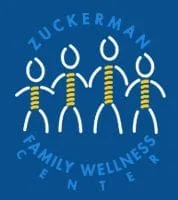Chronic Knee Pain
Common Causes of Knee Pain
Knee pain can leave you wondering if you will ever run, climb stairs or sit comfortably in a movie theater again. Although incredibly complex and sturdy, the knee is more prone to injury than any other bony structure in your body besides the spine.
Arthritis Knee
Arthritis most often causes problems with the knee joint, but can affect other structures like muscles, tendons and ligaments. Osteoarthritis, the most common form of arthritis in the knee, is caused by the gradual degradation of the cartilage in the joint. Rheumatoid arthritis causes the joint to become inflamed and can often cause destruction of the surrounding cartilage. A deformity often leads to arthritis in the knee, but more often, obesity or excess weight, or repetitive stress injuries from sports are the culprits. Symptoms include stiffness or locking joints.
Knee Cartilage Injuries
Chondromalacipatellae, a softening of the kneecap cartilage, occurs most often in runners, skiers, cyclists and soccer players.
Iliotibial Band Syndrome
Inflammation of a tendon and its subsequent rubbing over the outer knee bone is most often caused by stress of long-term overuse, such as sports training. Symptoms include aches or burning sensations at the side of the knee, sometimes the pain can radiate up the side of the thigh.
Ligament Injuries
The anterior cruciate ligament (ACL) and posterior cruciate ligament (PCL) can become sprained and cause a great deal of pain. Injury to the cruciate ligaments is sometimes referred to as a “sprain.” The ACL can become stretched or torn by a sudden or direct impact, such as in an auto accident or football tackle. Injuries to the medial collateral ligaments are often caused by a blow to the outer side of the knee that stretches and tears the ligament on the inner side of the knee. Football and hockey players often incur these kinds of injuries. The injury is often accompanied by a “pop” sound, followed by a buckling of the knee sideways.
Meniscus Injuries
Quick twists or rotations of the upper leg or repetitive rotations of the knee while bearing right can tear the meniscus.
Osgood-Schlatter Disease
This condition is caused by repetitive stress or tension on the upper tibia. The patellar tendon and surrounding soft tissues at the point where the tendon attaches to the tibia can become inflamed. Pre-adolescent boys involved in sports that include frequent running or jumping are particularly prone to this.
Tendon Injuries
Tendon injuries in the knee can be caused by anything from tendonitis to a ruptured or torn tendon. Overuse can cause the tendon to stretch like a rubber band, later becoming inflamed.
Referred Pain
Referred pain can result from low back facet joints, Sacroiliac joints, hip joints, and muscles surrounding the knee, nerve compression in the low back, pelvis and thigh, or biomechanical dysfunction of surrounding joints in the feet, hips and pelvis.
When should I get Chiropractic treatment?
The knee is a complex joint that relies heavily on ligaments and muscles for stability. When pain is perceived as coming from the knee, all the anatomical components need to be examined, and in addition to the knee joint, the low back, pelvis, hip, ankle and foot need to be examined due to the direct influence they have on the knee, and vice versa. Our approach to assessing and treating the knee includes the evaluation of the other joints and muscles relating to the knee. This is for several reasons:
- Pain can often be referred from other structures in the low back, pelvis and hip into the knee.
- If other joints in the lower limbs are not working correctly they can put increased stress on the knee joint, resulting in injury over time. Therefore to resolve the knee pain, we may also treat other areas, to maximize long-term improvement.
Ask yourself these questions. If you answer yes to any of them, then chiropractic treatment may be your knee injury treatment solution.
- Is knee pain limiting your day-to-day or sporting activities?
- Have you been given painkillers or taken anti-inflammatory drugs and been told to rest with no long-term improvement?
- You have been told you have arthritis?
What kind of treatment can I expect?
Of course, every patient receives a personalized plan for their specific condition, but typical treatment may include: Reduce Joint Inflammation and Reduce Pain
- Avoid aggravating factors
- Use of support
- Ice to reduce inflammation, muscle spasm and pain
- Soft tissue healing with laser, ultrasound and interferential therapy
Normalize Joint Function
Specific chiropractic manipulation techniques to areas of restricted movement in the knee and surrounding joints, to increase movement, improve the function and reduce pain.
Rehabilitation Program
When appropriate, we may introduce exercises to improve strength, endurance and stability, and to prevent new injuries.
